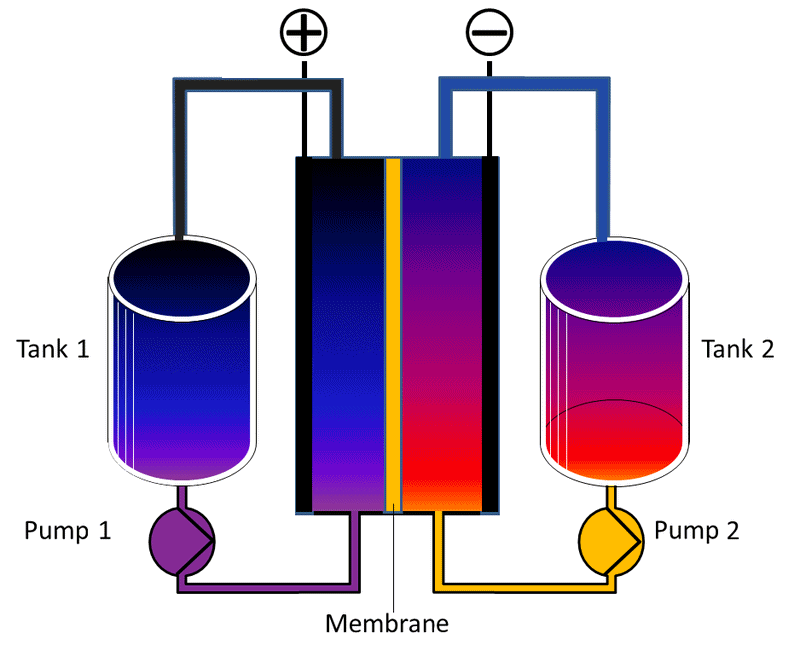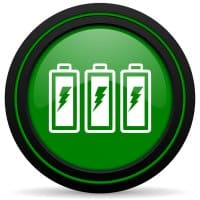Researchers from Harvard University’s John A. Paulson School of Engineering and Applied Sciences (SEAS) have developed a cheap, non-toxic flow battery for wind and solar power storage that can withstand over a decade of full charge-discharge cycles.
Flow batteries are large-scale liquid batteries in which all electroactive components are dissolved in the electrolyte. The liquids are stored in two tanks and the electrodes in a separate chamber. Pumping solutions in one direction charges the battery and the other direction discharges it.
Theoretically, the larger the tanks, the more energy each battery can store. However, current large flow batteries lose storage capacity as the electrolyte used in the system degrades over time, requiring costly upkeep to maintain capacity.

The Harvard system stores energy in organic, non-corrosive medium dissolved in water. By fine-tuning the chemistry of the positive (ferrocene) and negative (violegen) molecules that form the electrolyte solutions, the team found they could demonstrate a battery that loses just one percent capacity every 1,000 charge-discharge cycles. It could also use a lower cost ion-selective membrane separating the two sides of the battery.
The results, published in ACS Energy Letters, are claimed to be the highest storage capacity retention rates ever reported.
“Lithium ion batteries don’t even survive 1000 complete charge/discharge cycles,” said team leader Michael Aziz, the Gene and Tracy Sykes Professor of Materials and Energy Technologies.*
Aziz has pedigree when it comes to designing improved flow batteries. In July last his group developed a redox flow battery utilising modified B2 vitamins (riboflavin). In 2014, Aziz, along with Harvard researchers unveiled the first “organic” flow battery, which removed the need for expensive and toxic metals to form an effective electrolyte.
The U.S. Department of Energy (DOE) is funding a race to build a battery capable of storing energy for below USD $100 per kilowatt-hour, a price that would make stored wind and solar energy competitive with energy produced from traditional power plants.
“If you can get anywhere near this cost target then you change the world,” said Aziz. “It becomes cost effective to put batteries in so many places. This research puts us one step closer to reaching that target.”
“This work on aqueous soluble organic electrolytes is of high significance in pointing the way towards future batteries with vastly improved cycle life and considerably lower cost,” said Imre Gyuk, Director of Energy Storage Research at the Office of Electricity of the DOE.
“I expect that efficient, long duration flow batteries will become standard as part of the infrastructure of the electric grid.”
*It should be noted that good quality, new generation home battery systems offer warranties well exceeding 1,000 charge/discharge cycles. This is because these batteries’ storage ratings are based on “useable battery capacity”. Beyond useable capacity, there’s always something left in the tank so to speak, extending a battery’s life dramatically.












































